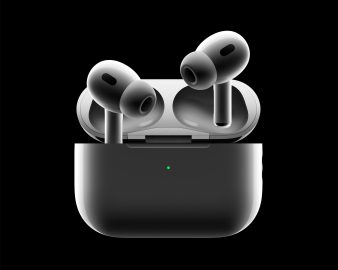
After settling its legal fight with Qualcomm last year and securing a 5G chip supply for its 2020 iPhones, things seemed to be looking up for Apple bringing the next-gen cellular standard to its iPhone 12 lineup. However, a new report today says that Apple isn’t satisfied with Qualcomm’s antenna designed to work with its 5G chips and that it may make its own… for this fall’s iPhones.
Fast Company‘s anonymous source says that Qualcomm’s QTM 525 5G antenna wouldn’t work with the planned thickness of Apple’s 2020 iPhones.
Apple balked at the QTM 525 millimeter-wave antenna module offered to it by Qualcomm because it doesn’t fit into the sleek industrial design Apple wants for the new phone, a source with knowledge of Apple’s plans told Fast Company. Qualcomm will provide the 5G modem chip–its Snapdragon X55, also used in Samsung’s new Galaxy S20 phones–for the newest iPhone, which will likely be announced in the fall.
But even though Apple is reportedly working on its own 5G antenna to work with Qualcomm’s Snapdragon X55 5G chip, the source told Fast Company that Apple still could fall back and use Qualcomm’s 5G antenna.
However, Apple typically designs on several tracks, and it’s concurrently working on another design that uses both the Qualcomm modem and antenna. It could default to this option later this year, our source said. But that would require Apple to settle for a slightly thicker iPhone than it wants.
Noted by Fast Company, Apple has a messy history with designing its own antennas, like the iPhone 4 and the “antennagate” that ensued. With how big the 5G debut is expected to be, this would be a rough time for a similar scenario. And what’s more, Fast Company‘s source detailed that 5G antennas are trickier than 4G ones.
The antennas required for millimeter-wave (mmwave) 5G devices are harder to design than other kinds of antennas. Because these antennas send and receive higher frequency signals than earlier generations, our source said, there’s less room for error in their design and manufacture. A slight imperfection in an antenna coming off the production line might lead to connection problems later on.
Beyond Apple wanting to keep its 2020 iPhones from becoming thicker due to Qualcomm’s 5G antenna, another reason it may be wanting to make its own could be some bad blood left over from its lawsuit with Qualcomm.
Apple doesn’t just want to use its own antenna for industrial design reasons. In general, the company wants as few Qualcomm parts in the iPhone as possible. As our source put it, Apple still feels it’s “getting screwed on royalties” by Qualcomm.
Read more on iPhone 12:
- Ming-Chi Kuo casts doubt on 2×2 MIMO uplink support for 5G iPhone 12
- Digitimes: Coronavirus production delays will not affect iPhone 12 September launch, high demand for 5G A14 chips
- Video: Latest mockups compare relative sizes of rumored iPhone 12 lineup
FTC: We use income earning auto affiliate links. More.





Comments